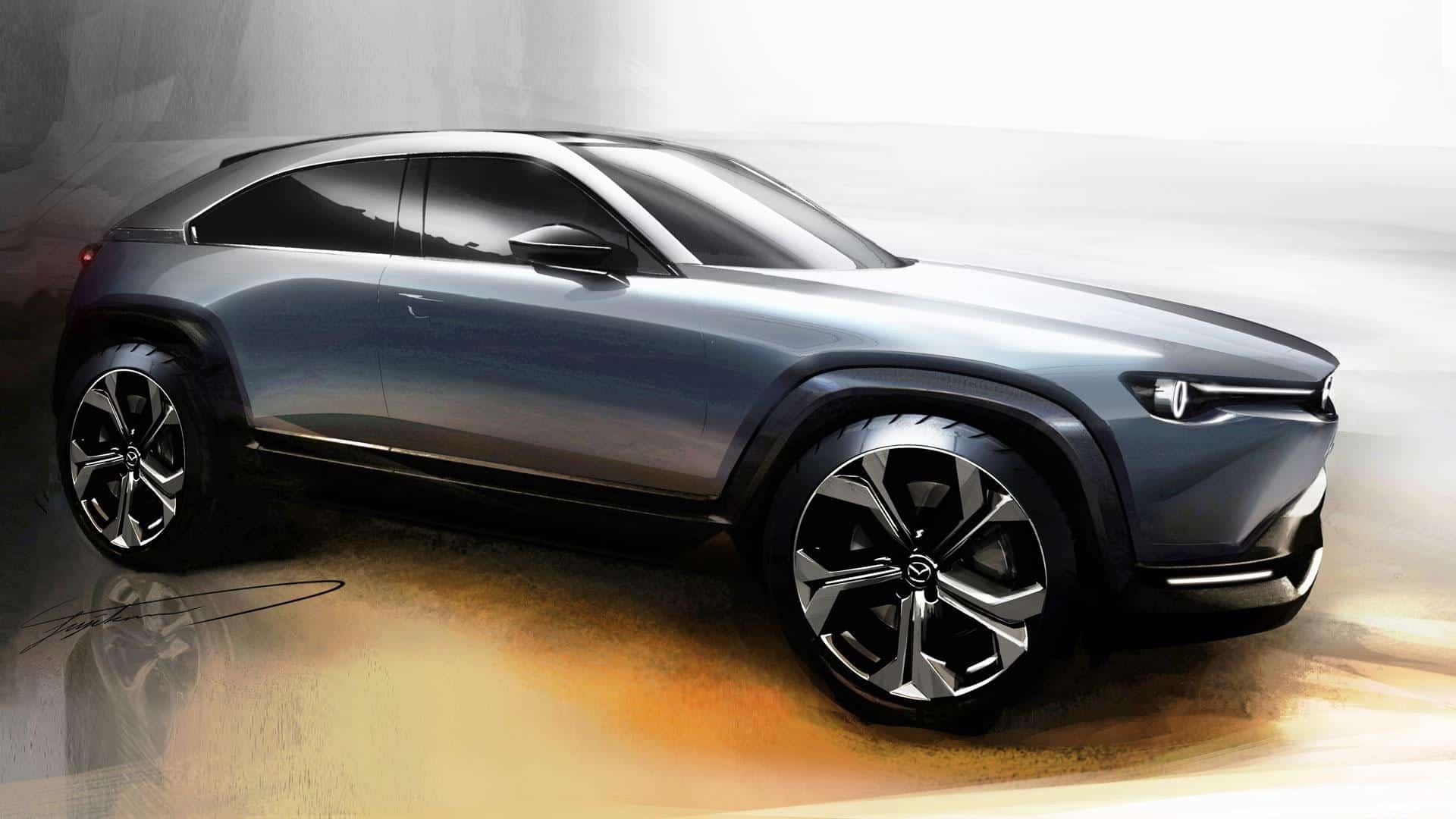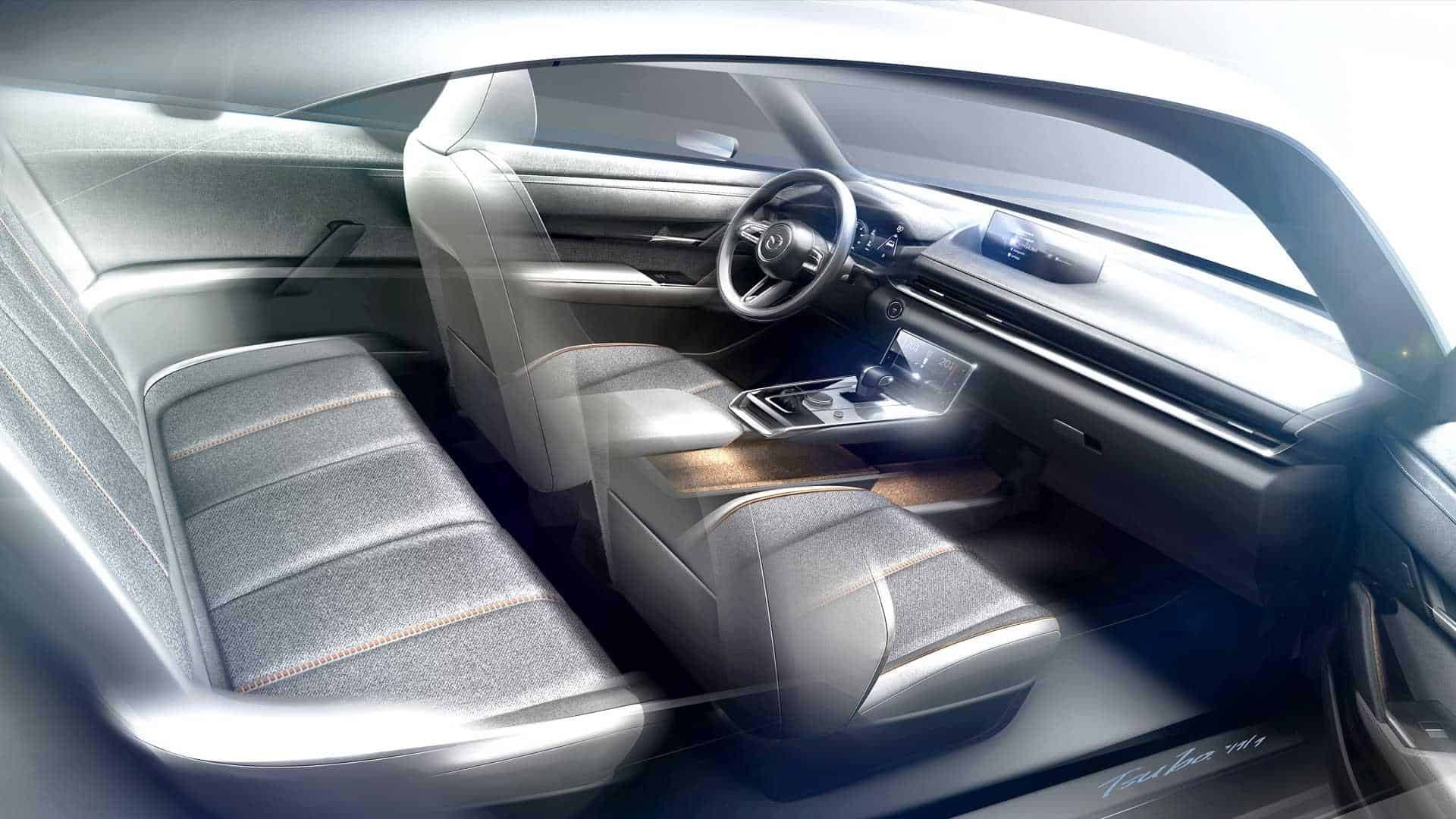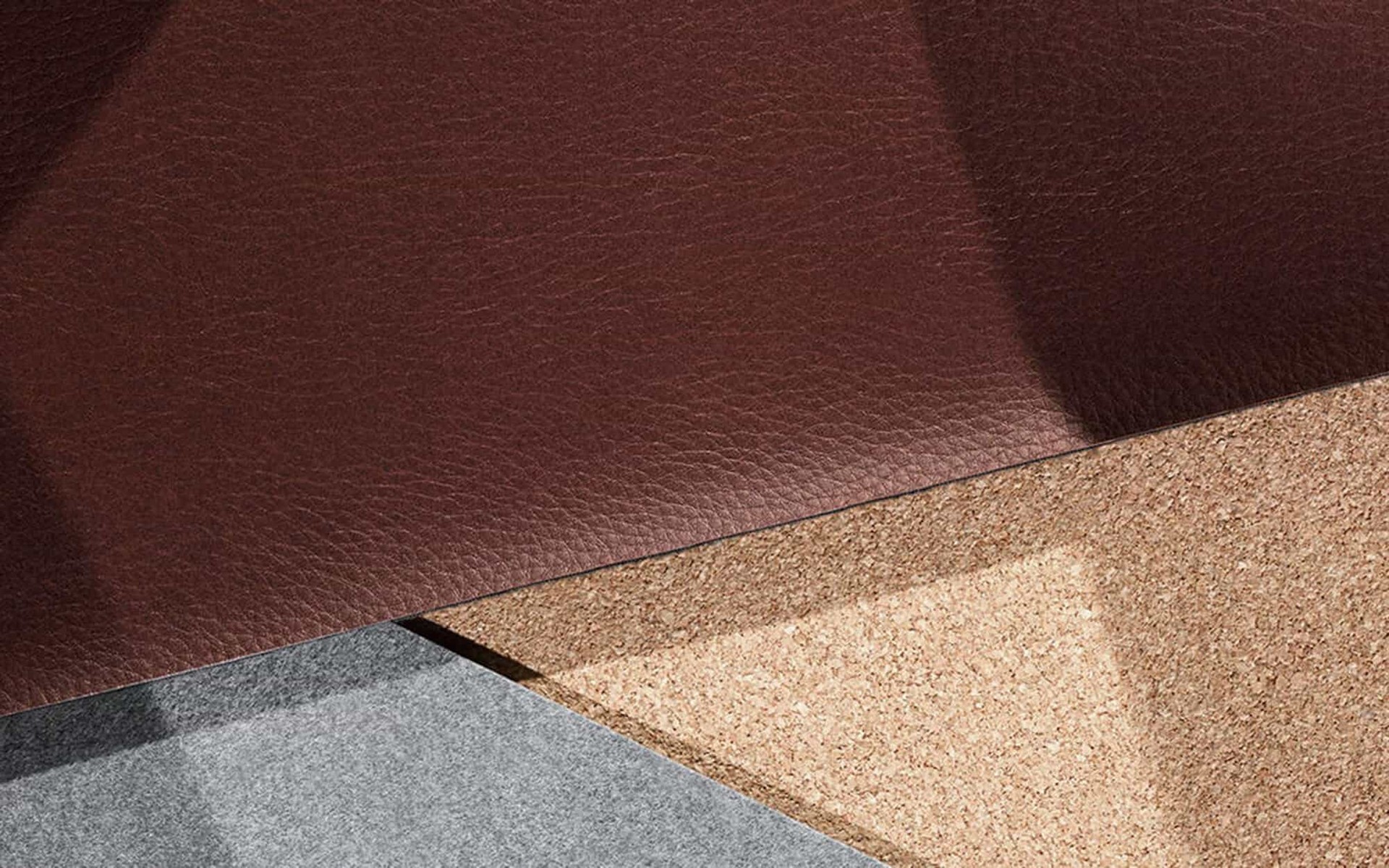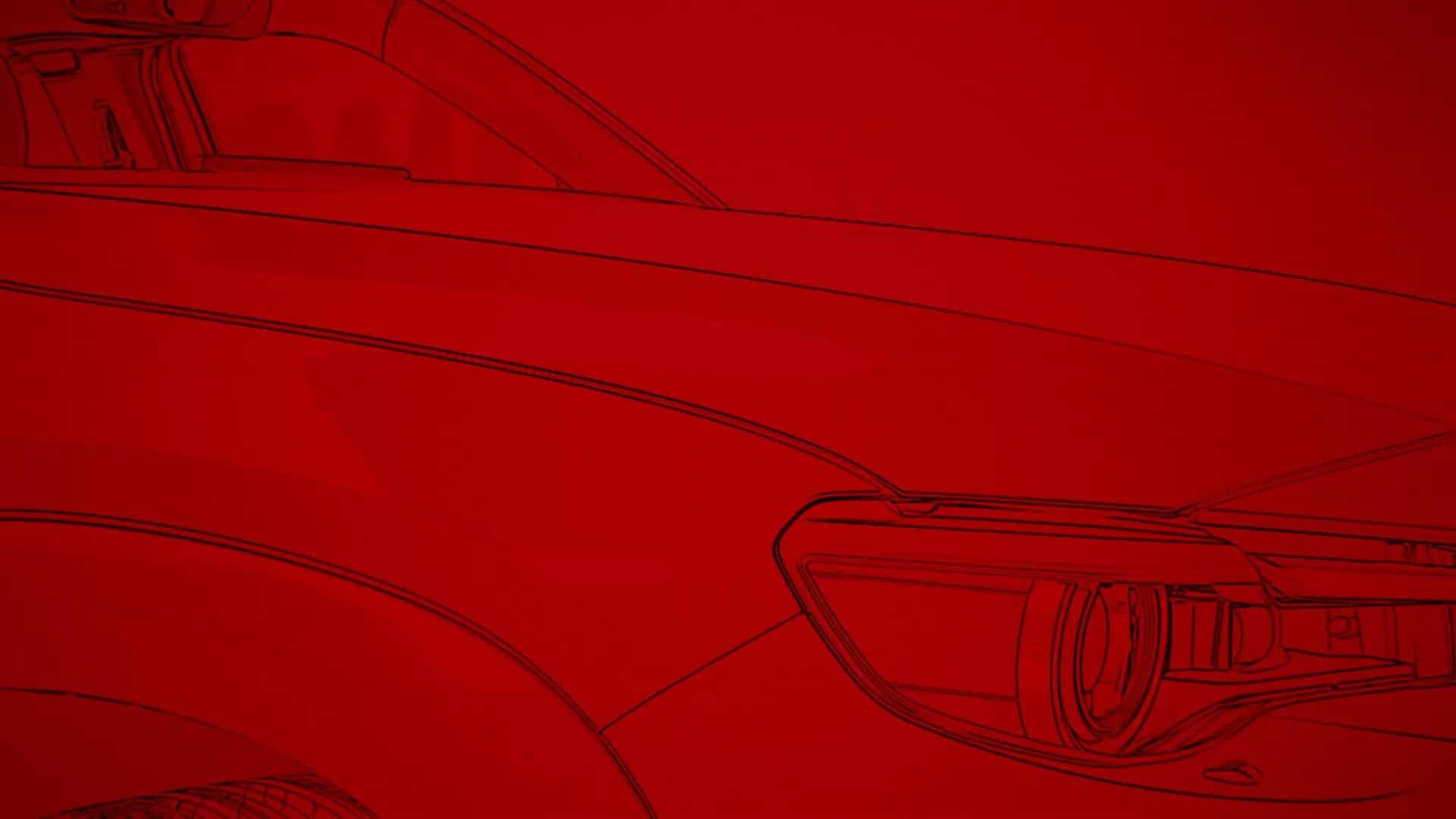
INNOVATE
Mazda MX-30: Philosophy of the future
The MX-30, Mazda’s first all-electric vehicle, breaks new ground for both the manufacturer and the car industry, with its human-centric design language and a determination to provide the sector’s best driving experience. Mazda Stories investigates the philosophies behind the car Mazda is entrusting with its legendary MX naming convention.
MX-30: the hallmark of innovation
The lengths Mazda goes to in pursuit of perfection can be as unexpected as they are exhaustive. For example, in the process of perfecting the MX-30’s synthesized engine note, the manufacturer experimented with a vast range of sounds—including the recording of a sports car engine. This obsession with detail is warranted, given that Mazda’s first production electric vehicle carries the legendary MX naming convention. MX represents a combination of innovation and value, and Mazda reserves this badge exclusively for its most groundbreaking cars, the most famous of which remains—for now at least—the iconic MX-5 sports car.
The MX-30 may change that. The car’s design process was unique, and so is the finished product. At the beginning of development Yoichi Matsuda, the MX-30’s Chief Designer, started from a blank canvas, and approached the project simply as a problem of 21st-century mobility to be solved. A key product of this process is an additional strand to Mazda’s Kodo design language, called Human Modern. This concept influences and informs several aspects of the MX-30, from driving dynamics to cabin design, and makes the vehicle one of the most human-centric, innovative, capable and environmentally friendly electric cars on the market.
Design
Mazda’s approach to the MX-30’s external design is one of strength and simplicity. Matsuda and his team let the Human Modern philosophy shape the MX-30; the human-centric focus leans on familiarity, warmth and functionality.
The MX-30 does not subscribe to the Kodo—Soul of Motion design language that informs Mazda’s central range of vehicles, but it does retain elements. One of these components is “less is more”—the focus on removing all superfluous design elements. The result is a bold, striking exterior of unique simplicity and presence.
The MX-30’s cylinder-shaped lights are deep-set and drawn inward to give a sense of purpose, while the freestyle doors epitomize the Human Modern approach. They offer a perfect blend of functionality and form, allowing easy access for passengers and luggage, while also contributing to the cabin’s sense of lightness, space and freedom. Whether you’re loading the car for a road trip or pausing to take in a beautiful vista, the freestyle doors are designed to enhance life’s everyday experiences.
Inside, the MX-30 features Mazda’s most advanced cabin to date and is designed to engender a spacious ambience for all occupants, and a oneness between vehicle and driver. The latter is achieved by a carefully considered cockpit that puts the driver and central “floating console” at the heart of the action. The console’s unique design creates a spacious environment in the cabin. Two screens make connecting and interacting with the car quick, simple and safe. The top screen takes care of traditional tasks such as navigation and multimedia control, while the bottom one features a touchscreen, and enhances the emotional connection with the car by greeting occupants and handling climate control options. The minimalist, wide dashboard and instrument panel encourage the driver to focus on the road.
The MX-30’s passengers also benefit from the Human Modern design language. The cabin interior offers intricate detailing and an open, airy space to enjoy. Much of this is due to the use of technologically advanced sustainable materials. These include cork, which pays homage to Mazda’s heritage as a cork manufacturer. A “breathable” material made from recycled plastic bottles (inspired by washi paper) is also used and signals that the MX-30 is a different offering from other electric vehicles. As the MX-30 program manager Tomiko Takeuchi puts it: “The cabin features materials sourced from nature or designed to reduce their impact on the environment, and subtly encourages you to breathe deeper. The space is designed to help settle your mind and soul and offers a seemingly contradictory feeling of being enveloped in a sense of openness.”
The drive
Behind the wheel the MX-30 performs unlike any other electric vehicle. Mazda’s new eSkyactiv drivetrain takes advantage of the electric engine’s unique qualities to make it one of the best driving cars Mazda has produced. It is the marque’s determination that every new Mazda offers the superb driving experience synonymous with the brand. Mazda achieves this through the philosophy of Jinba Ittai, which describes a oneness between driver and vehicle.
The MX-30’s battery size means it is light, and this combined with the car’s 50/50 weight distribution provides the foundation for a fantastic driver’s vehicle. But Takeuchi, herself a former Mazda test driver, has deployed a serious arsenal of technology to capitalize on this promising platform and play to the unique strengths of the Mazda eSkyactiv drivetrain.
Drivability
Many EVs on the market provide an underwhelming driving experience, but Mazda is determined that its first all-electric vehicle bucks this trend. A great driving position, e-GVC Plus technology, a responsive throttle pedal and low curb weight (courtesy of the battery size) mean the MX-30 is a fantastic driver’s car.
Range
Mazda estimates the MX-30’s 200 km range caters for its customers who drive no more than 50 km on an average day.
Mazda’s advanced G-Vectoring Control Plus technology has been tailored (and named e-GVC Plus) to provide maximum comfort, predictability and cornering stability. The customizable driving position has been meticulously designed to enhance the driving experience while guaranteeing comfort, and a unique new motor pedal offers a connection with the car only the MX-30 can provide. This is because while most EVs offer very linear power delivery through the accelerator, the MX-30 offers a natural progression based on how fast and firm the accelerator is pressed, allowing for feel and control of how the car is travelling down the road.
Finally, the driving experience is enhanced by a carefully designed synthetic engine note, developed over a three-year period. Not only does the noise supply a calming soundtrack for occupants, but it changes in sync with the speed the car accelerates and travels at, making it easier for the driver to appreciate how fast they are going, and therefore provides confidence in controlling the car. Whether two-seater sports car, rotary icon or dynamic SUV, Mazda has built some of the best driving cars the industry has seen. The MX-30 now joins this remarkable pantheon.
Your safety
When it comes to safety, the current Mazda3 and Mazda CX-30 are two of the most globally awarded vehicles on the market, and Mazda continues this good work with the MX-30. Vehicle safety technology is generally divided into two categories: passive safety and active safety. The former constitutes the physical elements of a car that contribute to the safety of its occupants and pedestrians, while the latter deals with “smart” features, such as electronic driver aids.
Mazda has been rigorous in ensuring the MX-30 meets the highest expectations and standards in both safety categories. Clear driver visibility and a suite of airbags (including driver knee airbags) are complemented by a high-rigidity body. The strength of the car’s B pillar comes courtesy of the MX-30’s innovative freestyle doors, making the car’s passive safety offerings superb. The front seat structure has been designed to effectively mitigate whiplash, and the inner hood structure quickly absorbs energy away from a pedestrian in the event of an incident. Mazda has also included various safety mechanisms to ensure the MX-30’s occupants are protected from the car’s high-voltage battery, in the event of a crash. The battery is held in a high-strength protective frame, and if the car detects a collision has occurred, it shuts down all power to the battery.
Environmental impact
The MX-30’s environmental credentials extend beyond the car’s zero emissions statistics. Due to the smaller sized battery, less CO₂ is emitted in its manufacture and less precious metal is required in its construction. In addition, the 35 kW battery requires less electricity to charge up fully, so the car is both lighter on the environment all round and lighter on your wallet.
The MX-30’s range of active safety features (called i-Activsense) are the most advanced Mazda has produced. Nineteen key technologies work tirelessly to spot hazards and support the driver, including Mazda’s Blind Spot Monitoring, Traffic Sign Recognition and Mazda Radar Cruise Control systems. A number of i-Activsense technologies debut on the MX-30. These include Smart Brake Support with Turn-Across Traffic, designed to reduce the chance of collision at intersections. A new Emergency Lane Keeping technology is now paired with Mazda’s other lane discipline features to ensure your MX-30 never leaves the road. The result is driver confidence on any road, in all conditions.
Words Tommy Melville / Images The Mill
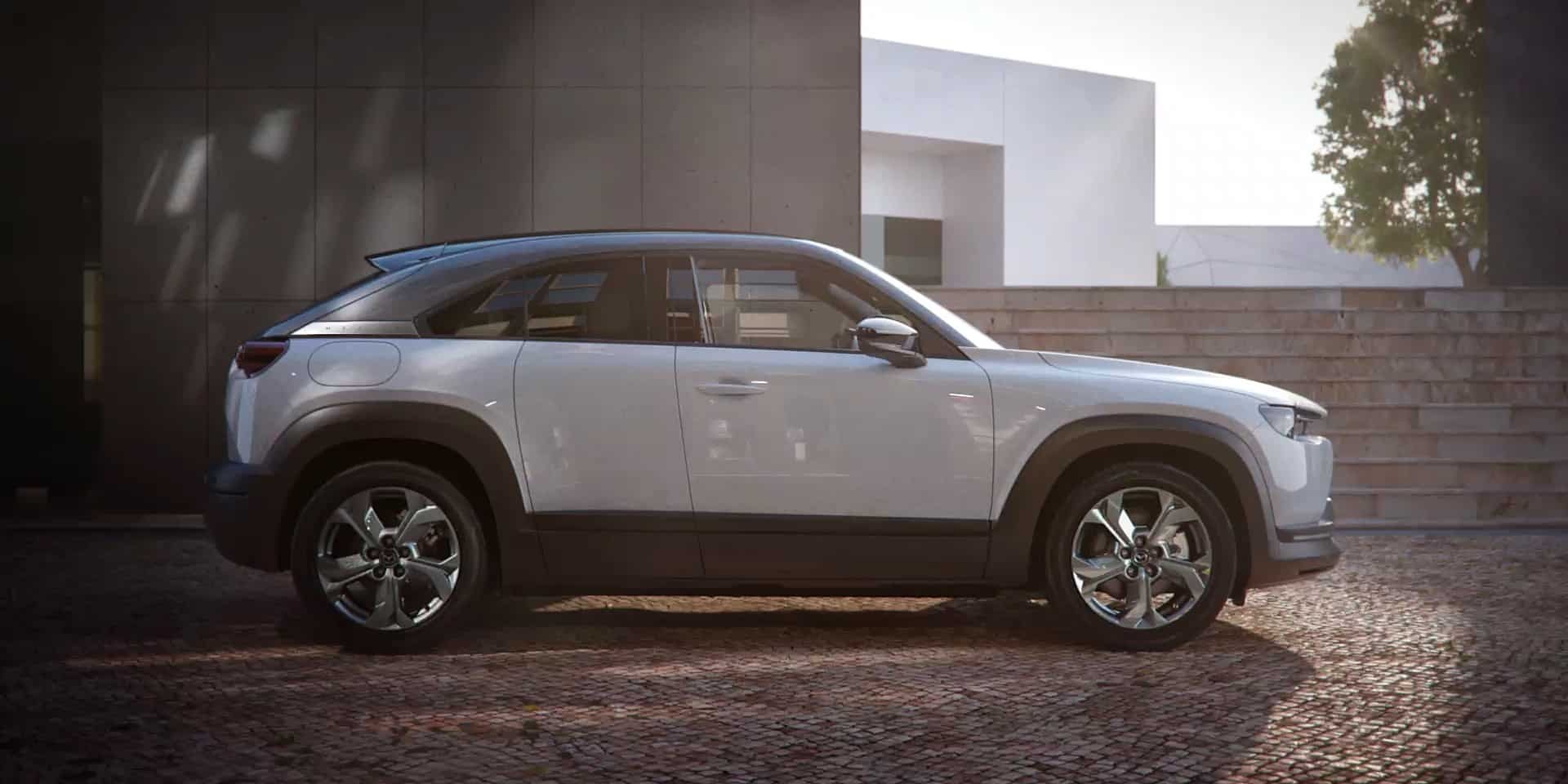
find out more
All-electric, all Mazda
Discover the new standard for an electric SUV
